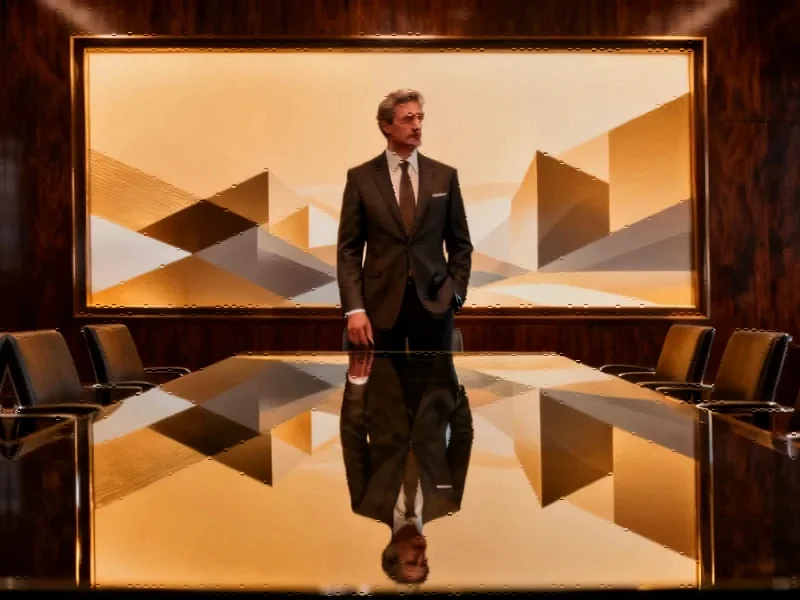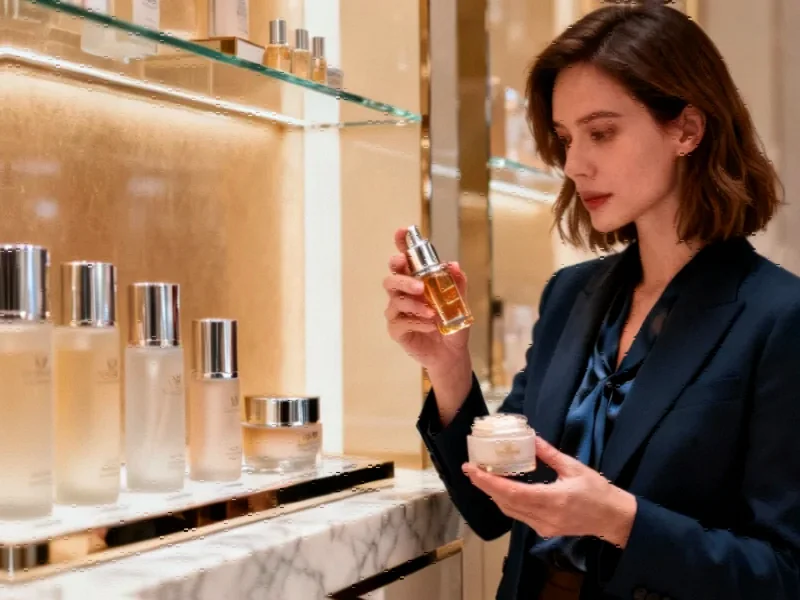Luxury Giant’s Radical Restructuring
In a bold strategic move that signals a fundamental shift in direction, Kering has announced the sale of its beauty operations to French cosmetics leader L’Oréal for €4 billion. The transaction, finalized under new CEO Luca de Meo’s leadership, represents one of the most significant portfolio adjustments in recent luxury industry history and marks the beginning of what promises to be a comprehensive overhaul of the Gucci-owner’s business model.
De Meo, who joined Kering from Renault where he engineered a remarkable turnaround, immediately signaled his intention to bring sweeping changes to the luxury conglomerate. “The urgency is to focus on the things where we have a critical size and skills,” de Meo emphasized in his first major interview since taking the helm. “That will help me lighten the boat and be able to focus on the relaunch of fashion brands.”
Addressing Core Challenges
The luxury sector faces multiple headwinds after experiencing unprecedented growth during the pandemic. What began as a boom driven by housebound consumers splurging on high-end goods and explosive growth in the Chinese market has transformed into a more challenging landscape characterized by consumer spending pullbacks and economic uncertainty in China.
Kering’s particular vulnerability stems from its heavy reliance on Gucci, which accounts for approximately half of group sales and two-thirds of profits. The flagship brand has struggled to maintain consumer appeal in the increasingly competitive luxury space while simultaneously grappling with over-dependence on Chinese demand at a time when the country’s economic recovery remains uncertain.
This strategic repositioning comes amid broader industry developments that have seen luxury groups reassess their portfolios and operational focus. The move reflects a growing recognition that specialization and deep expertise in core competencies may provide competitive advantages in today’s challenging market environment.
Transaction Details and Strategic Rationale
The landmark deal transfers perfumer House of Creed to L’Oréal’s portfolio while granting the beauty giant 50-year licenses to develop and sell fragrances under Kering’s prestigious fashion labels: Gucci, Bottega Veneta, and Balenciaga. In return, L’Oréal will pay undisclosed royalties to Kering, creating an ongoing revenue stream from the divested assets.
According to UBS analyst Zuzanna Pusz, the transaction addresses “one of the biggest investor concerns” by significantly reducing Kering’s debt burden. The proceeds are expected to lower Kering’s net debt from 3.1 times EBITDA to approximately 2 times, providing crucial financial flexibility despite impairments on beauty assets that included the €3.5 billion acquisition of Creed just two years ago.
The speed of the transaction execution reflects de Meo’s management philosophy. “I’ve always believed that speed is important in modern business,” he stated, noting that negotiations accelerated from August despite beginning before his official arrival at Kering. His commitment to accelerating decision-making processes signals a departure from previous operational rhythms at the luxury group.
Broader Industry Implications
For L’Oréal, the acquisition represents its largest ever and solidifies its position as the dominant player in high-end beauty. CEO Nicolas Hieronimus revealed ambitious plans to nearly triple Creed’s annual revenues to €1 billion “fairly quickly,” leveraging L’Oréal’s proven expertise in scaling premium beauty brands.
The French beauty giant has demonstrated this capability previously with its $2.5 billion acquisition of Aesop, which has seen revenues increase by approximately 10% in 2024 according to sources familiar with the business. Similarly, L’Oréal generates about €3 billion in annual beauty revenues from Yves Saint Laurent, another Kering brand, slightly exceeding YSL’s fashion sales of €2.9 billion last year.
This performance gap highlights the substantial opportunity L’Oréal sees in developing Gucci’s beauty potential. Hieronimus noted that Gucci’s beauty range generated only about €600 million last year compared to the label’s €7.7 billion in fashion revenues, suggesting significant room for growth that aligns with broader market trends toward premium beauty segments.
Future Portfolio Considerations
De Meo maintained a pragmatic stance regarding additional asset sales, including Kering’s successful eyewear division. While not committing to further divestments, he acknowledged keeping options open while emphasizing the strategic importance of the eyewear business to Kering’s most valuable clients and its leadership position in high-end segments.
The CEO’s comments suggest a carefully calibrated approach to portfolio management that balances focus with maintaining valuable synergies across business units. This strategic balancing act reflects similar considerations seen in other sectors, including recent technology and industrial segments where companies are reevaluating their core competencies.
Market Reaction and Forward Outlook
Investors responded positively to the announcement, driving Kering’s shares up 4.1% on Monday and extending a rally that has seen the stock gain more than 80% over the past six months. This enthusiasm reflects growing confidence in de Meo’s ability to engineer a turnaround at Kering and optimism that the broader luxury sector’s challenges may be easing.
The transaction’s structure includes a delayed transfer of the potentially most valuable asset—the Gucci beauty license—which remains with beauty group Coty until their agreement expires in 2028. Hieronimus explicitly acknowledged that “having the opportunity, when it is legally possible, to recover the Gucci brand was one of our motivations” for pursuing the deal.
As Kering embarks on this new chapter, the luxury world watches closely to see how de Meo’s automotive industry turnaround experience translates to the nuanced landscape of high fashion. The CEO’s commitment to speed and focus suggests that additional strategic moves may follow, potentially reshaping not only Kering but influencing related innovations across the luxury sector.
The competitive dynamics in luxury continue to evolve, with Spanish fragrance and fashion group Puig also expressing interest in Kering’s beauty division according to sources familiar with the matter. However, the comprehensive nature of the L’Oréal partnership ultimately provided a more logical fit for both parties, highlighting the complex strategic calculations underlying major portfolio decisions in today’s interconnected luxury landscape.
As companies across sectors navigate similar strategic crossroads, from cybersecurity innovations to financial services confidence signals, Kering’s decisive pivot offers a compelling case study in corporate repositioning. The coming months will reveal whether this fashion-focused strategy can reignite growth at one of the world’s premier luxury groups while the industry continues to grapple with challenges including emerging technologies and shifting consumer behaviors.
This article aggregates information from publicly available sources. All trademarks and copyrights belong to their respective owners.
Note: Featured image is for illustrative purposes only and does not represent any specific product, service, or entity mentioned in this article.


